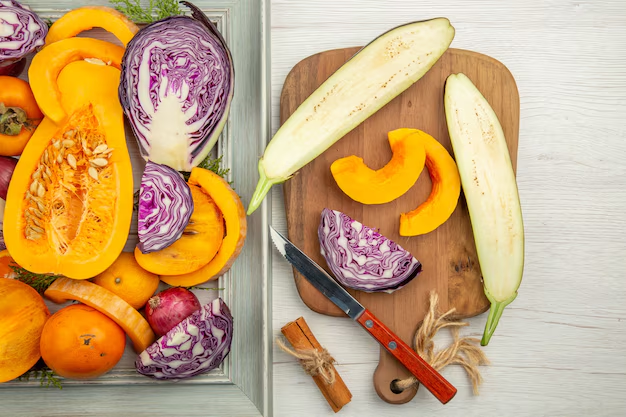How Long Do Cooked Vegetables Last in the Refrigerator?
Cooking delicious meals often leads to leftovers, and properly storing these leftovers is key to maximizing both flavor and safety. For those wondering how long cooked vegetables last in the refrigerator, the answer isn't one-size-fits-all. Factors such as the type of vegetable, storage methods, and the condition of your refrigerator come into play. In this guide, we’ll delve into these aspects, offering practical tips to keep your cooked veggies fresh and safe to eat.
🕵️♀️ Understanding the Basics
The General Shelf Life of Cooked Vegetables
On average, cooked vegetables can last between 3 to 7 days in the refrigerator. This timeframe ensures that the food remains safe to eat and retains most of its nutritional value. However, this can fluctuate based on various factors:
- Type of Vegetable: Leafy greens like spinach and kale may spoil faster compared to heartier vegetables such as carrots or squash.
- Cooking Method: Steamed vegetables may retain moisture that accelerates spoilage, while roasted vegetables might last longer due to reduced water content.
- Refrigeration: A consistent refrigerator temperature of 40°F (4°C) or below is critical for slowing bacterial growth.
🥗 Specifics for Different Vegetables
Some vegetables have unique storage requirements. Here's a quick look at how different types of cooked vegetables fare:
- Leafy Greens: Typically last 3 to 4 days.
- Root Vegetables (Carrots, Potatoes): Usually stay fresh for 5 to 7 days.
- Cruciferous Vegetables (Broccoli, Brussels Sprouts): Can last 4 to 6 days.
- Squash and Pumpkins: Often stay fresh up to 5 days.
Key Takeaways for Maximized Freshness
- Store promptly: Refrigerate cooked vegetables within two hours of cooking to prevent bacterial growth.
- Use airtight containers: Minimize exposure to air, which can hasten spoilage.
🥒 Tips for Proper Storage
Choosing the Right Containers
The type of container you use can influence how long your vegetables remain fresh:
- Glass Containers: These are non-porous and do not absorb odors, making them a great choice for retaining the natural flavor of your vegetables.
- Plastic Containers: Ensure they are BPA-free and fit tightly to keep moisture out.
- Reusable Silicone Bags: These are flexible and space-efficient, especially within cramped fridge spaces.
⚡ Storing Technique
- Separate compartments: If you have a large batch, divide the vegetables into portions. This way, you only open what you need while keeping other portions untouched.
- Label and date: Always label your containers with the type of vegetable and date of storage to easily track freshness.
🍽️ Recognizing Spoilage
It's equally important to know when cooked vegetables have overstayed their welcome in your fridge. Here are signs to look out for:
- Unusual odor: A sour or off-putting smell is a strong indicator of spoilage.
- Change in color: Darkening or fading colors can reflect deterioration.
- Texture: Sliminess or mushiness, especially in leafy vegetables, often means it's time to discard them.
⚠️ Pro Tip: When in doubt, throw it out. If you're uncertain about the safety of your vegetables, it's best not to risk foodborne illnesses.
🌱 Related Subtopics: More Than Just Storage
Nutritional Considerations
While cooked vegetables are incredibly nutritious, their nutrient profile does alter over time:
- Vitamin C and Folate: These nutrients degrade faster than others, especially if vegetables are exposed to air and light.
- Fiber and Minerals: These tend to remain stable longer, even during refrigeration.
Reheating Techniques
Reheating cooked vegetables properly is essential to both enjoy them and ensure safety:
- Microwave: Reheat on high in short intervals, stirring occasionally for even heating.
- Oven: Using a low heat option preserves texture, often ideal for roasted vegetables.
- Stovetop Sauté: This method reinvigorates the flavor and texture, especially for stir-fry dishes.
Meal Planning and Batch Cooking
Incorporating cooked vegetables into meal planning can be economical and time-saving:
- Plan ahead: Cook vegetables that complement multiple meals to save both time and effort.
- Batch cooking: Invest a weekend afternoon to prepare a variety of vegetables, ensuring a balanced diet throughout the week.
📝 Visual Summary: Quick Tips for Storing Cooked Vegetables
Here's a handy reference to help you keep your cooked vegetables fresh longer!
| 🥬 Vegetable Type | 🕒 Shelf Life in Fridge | 📦 Storage Tip |
|---|---|---|
| Leafy Greens | 3-4 days | Store with a paper towel to absorb moisture |
| Root Vegetables (Carrots) | 5-7 days | Keep in airtight containers |
| Cruciferous (Broccoli) | 4-6 days | Separate into portions |
| Squash and Pumpkins | Up to 5 days | Store in shallow, wide containers |
🌟 Practical Tips
- 🌡 Maintain a stable fridge temperature (at or below 40°F/4°C).
- 🔄 Avoid overstuffing the refrigerator; it hampers airflow.
- 🗓 Rotate foods regularly to consume older items first.
Preserving the freshness and safety of cooked vegetables not only aids in minimizing food waste but also ensures you're nourishing your body with the best possible ingredients. Awareness, planning, and proper storage are your allies in keeping those veggies crisp, vibrant, and delicious. Enjoy your culinary creations, knowing they are being stored with the utmost care!
